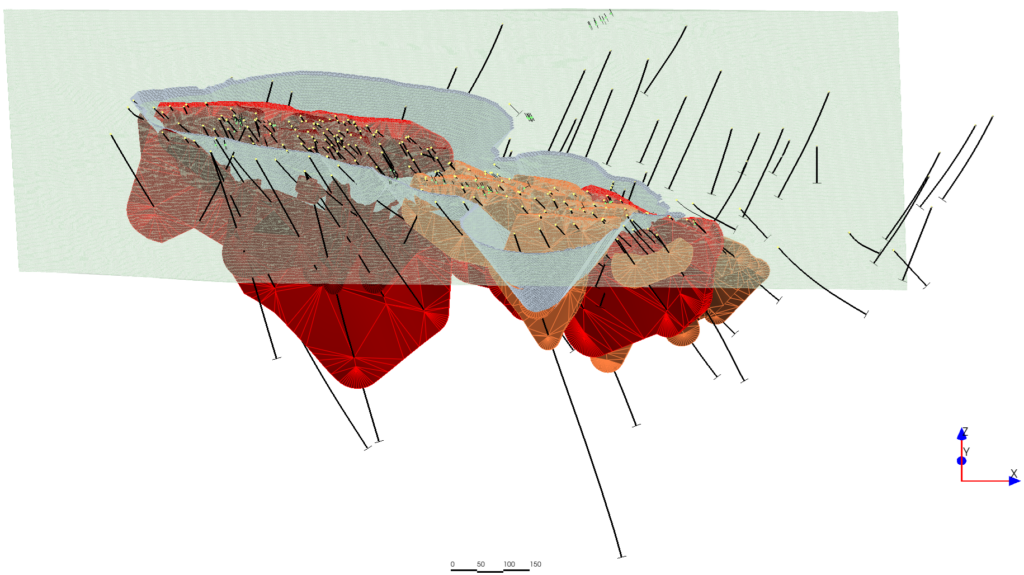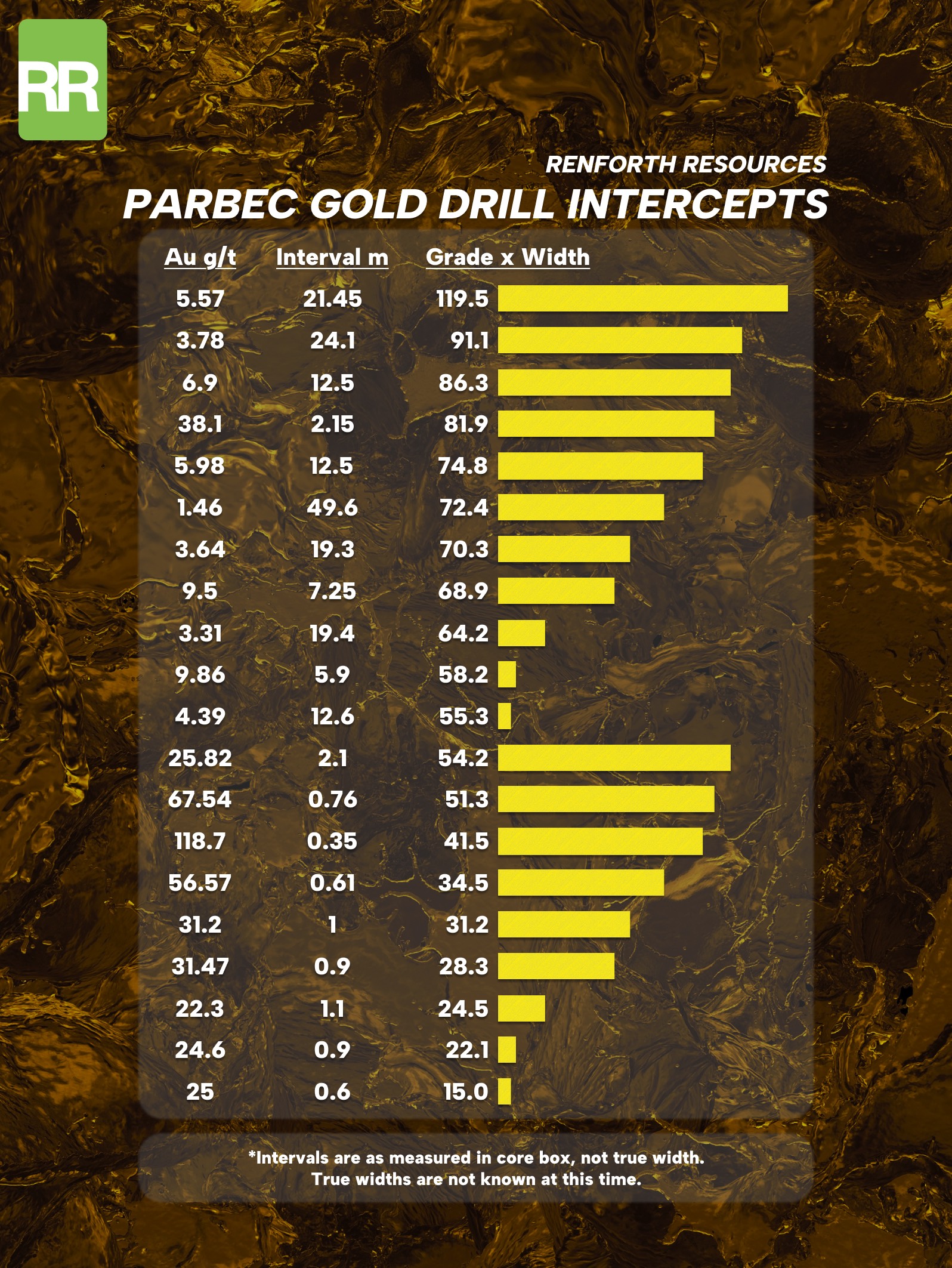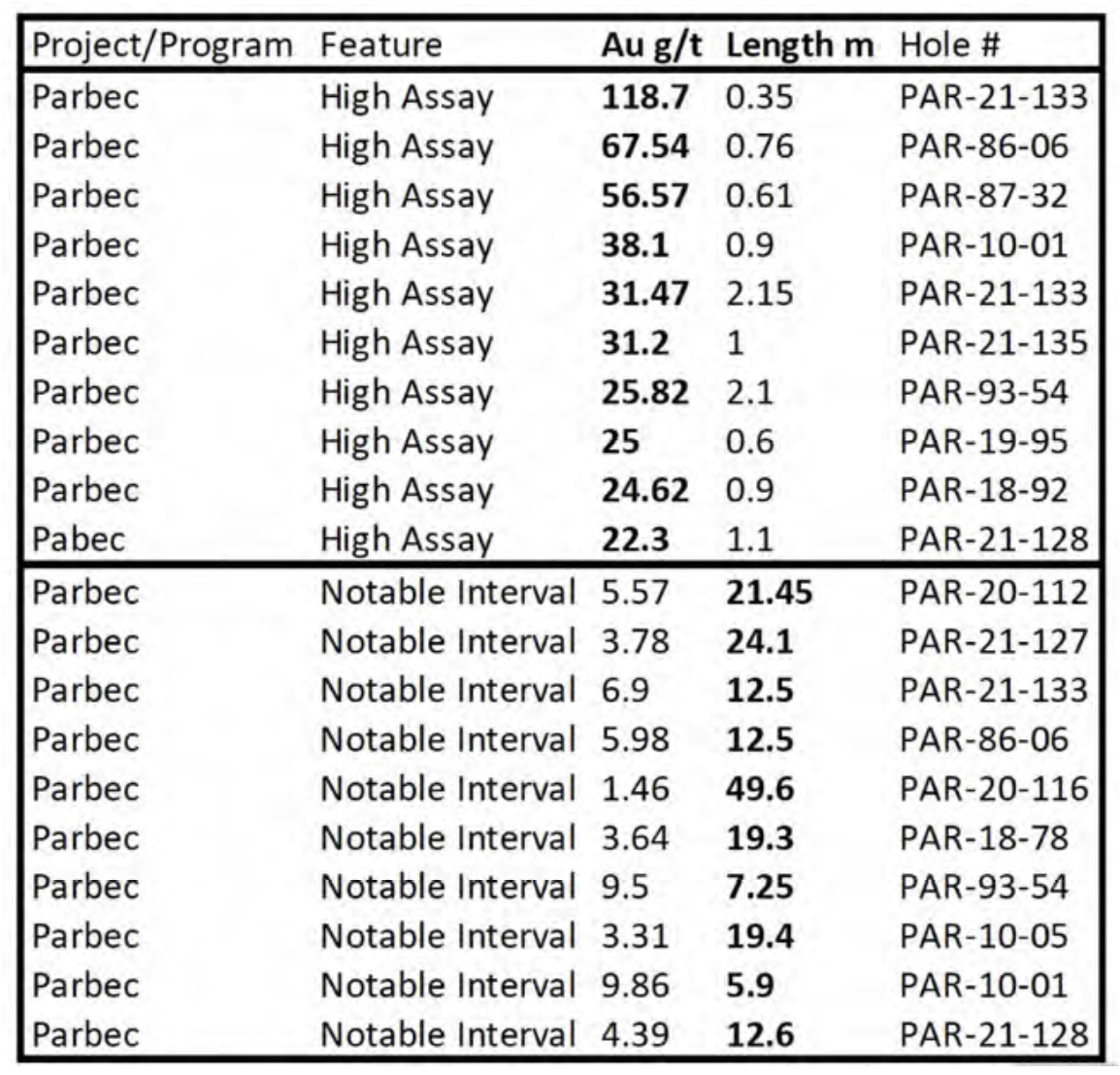
*Visible Gold is rare at Parbec, the bulk of our gold is in the Diorite, associated with sulphides – not quartz – and not visible to the naked eye!



Parbec Gold Deposit Geology
Renforth’s Parbec gold property is located on the Cadillac Break just outside of Malartic, Quebec. Gold mineralization occurs within a series of altered, fractured quartz-veined diorite intrusives and silicified feldspar porphyry bodies within and south of the Cadillac Break. Elevated sulfide contents are often associated with increased gold mineralization. Recent remodelling shows that mineralization is present as vertical zones in a North to North-East trending gold envelope, open to the north and down-dip to the south and cross-cutting lithologies. This results in a stacking of individual gold zones at or near surface and continuing at depth into the Pontiac sediments, with a southward plunge below the contact with the Pontiac sedimentary and the Cadillac Break. Mineralization is controlled by an embayment of the Pontiac contact, possibly the result of a regional fold remnant or syn-magmatic drag fold. The deposit has two primary structural controls: the vertical Cadillac Break and the south-dipping contact with the Pontiac Sediments to the south. The geometry of mineralized lenses is irregular along the Pontiac sedimentary contact. To the south-east, mineralized lenses trend north-east to east-west, cross-cutting the contact with the Pontiac Sediments.
Highlight Assay Intervals and Interval Widths

*Note – Intervals presented above are as measured in the core box, not true width.
**Note – Assays and Intervals from the 1980s, 1990s, 2020 and 2021 are not included in the Historic MRE, will be added to the 2025 MRE
Parbec 2025 MRE 43-101
The 43-101 technical report can be downloaded HERE
Parbec Drill Data
Following are links to assessment reports covering drilling at Parbec